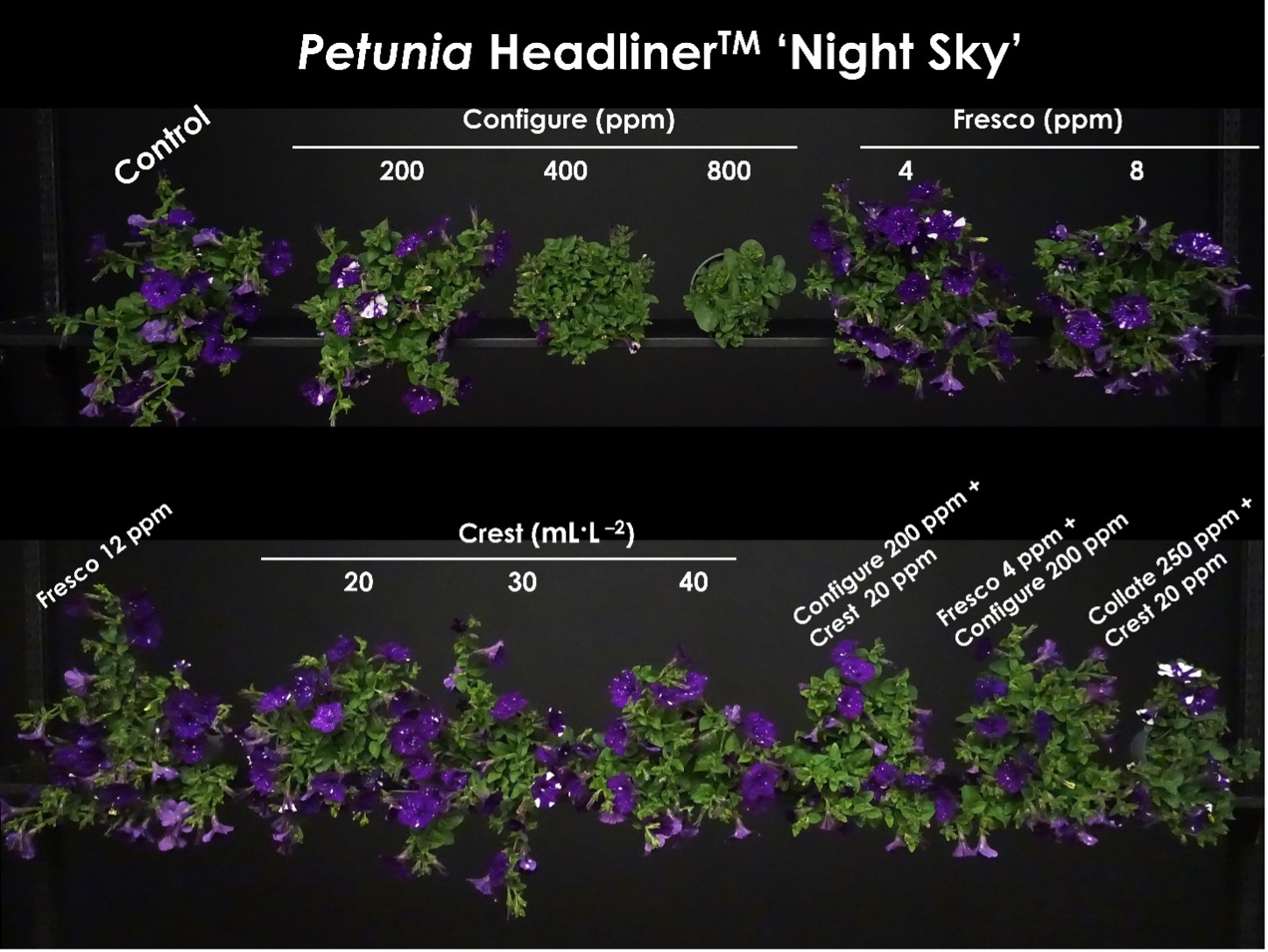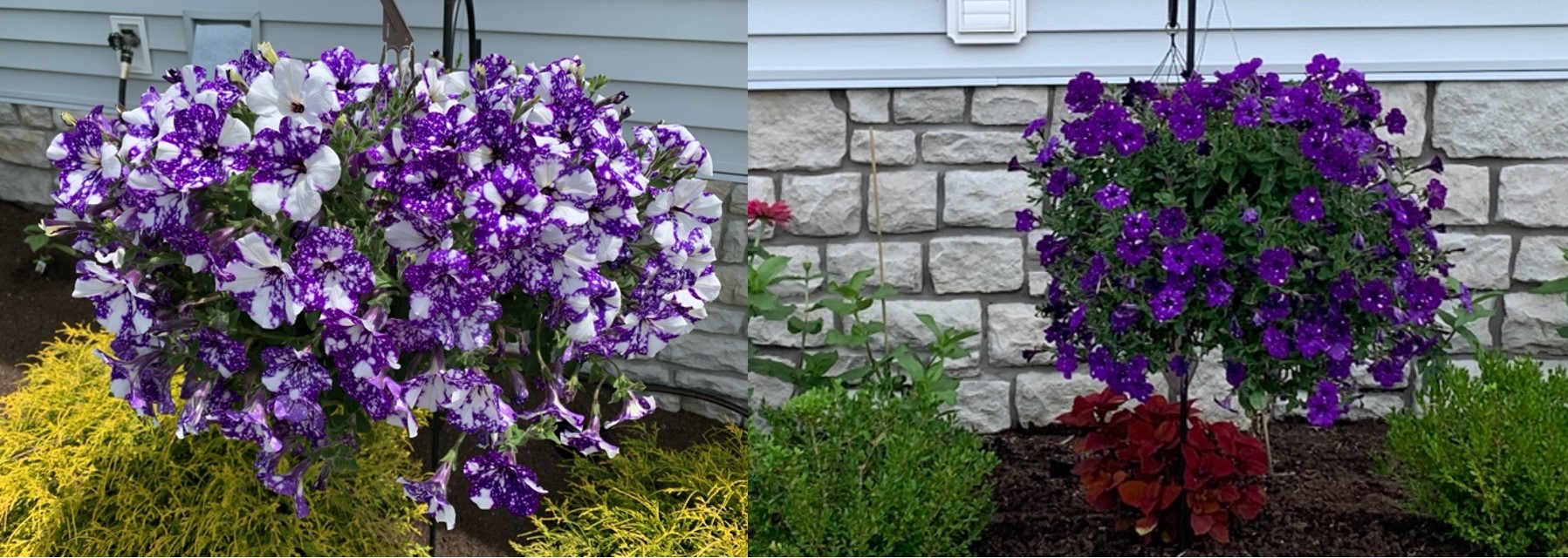Consult breeder culture sheets for success with new cultivars
New petunia cultivars with color patterns can be sensitive to some plant growth regulators and production temperatures. Make it a habit of consulting culture sheets developed by breeding companies for guidance on how to grow new and existing cultivars.

Plant breeders are continually working to improve the growth characteristics of their crops and petunia is no exception. Petunias account for the most sales of any flower segment with 11% of total sales of flowering plants, according to the 2022 United States Department of Agriculture Floriculture Crop Summary. While already available in a wide selection of colors and patterns, breeders continue to seek new cultivars of petunias that have unusual color patterns or novel colors. Petunia ‘Night Sky’ is a cultivar from Selecta One that was first introduced in 2016 after winning the European FleuroStar Award in Europe in 2015 (Photo 1). Since then, they have introduced other speckled petunias in the Sky Series of petunias.
In our greenhouse visits, we continue to see growers producing ‘Night Sky’ and others in the Sky series. Other breeders are introducing white-speckled varieties such as petunia Surprise ‘Sparkle Blue’ from Dummen Orange (new in 2021) and Splash Dance Moonwalk from Danziger (new in 2023) (Photo 2).

Whenever you’re growing a new cultivar, you should always consult culture guides developed by breeding companies. The guides include recommended environmental and cultural production information such temperatures, light levels, production times and suggested rates of plant growth regulators (PGRs). For example, the coloration pattern of petunia ‘Night Sky’ is sensitive to some PGR applications and growing temperatures.
PGRs are compounds that affect plant hormones that regulate internode elongation and branching in plants. Some PGR applications might affect pigmentation of the flowers by decreasing the synthesis of anthocyanins in the flowers. The Selecta Culture sheet notes that daminozide (e.g., B-Nine from OHP and Dazide from Fine Americas) applications in the last five weeks of production can cause excessively white flowers. Instead, it recommends a drench application of paclobutrazol (e.g., Bonzi from Syngenta and Piccolo from Fine Americas) at 1.0 to 3.0 ppm to limit stretch without bleaching of the flowers.
Recent Michigan State University research has determined that PGRs used to promote branching of greenhouse crops also influenced the coloration of Petunia ‘Night Sky.’ In the study, the crop was grown at a day and night temperature of 68 degrees Fahrenheit (20 degrees Celsius) and plants were very purple. Interestingly, when applied 10 days after transplant as a spray alone or in combination, Configure [6-benzyladenine (6-BA) from Fine Americas], Crest [cytokinin, indole-butyric acid (IBA) and gibberellic acid (GA) from Fine Americas], Collate (ethephon from Fine Americas) and Fresco (GA+6-BA from Fine Americas) increased the white pigmentation of flowers (Photo 3).

As mentioned earlier, temperature can also affect flower pigmentation. Flower color is influenced by both the generation and breakdown of anthocyanins, and both processes are influenced by temperature. Anthocyanin production and thus the purple flower color generally increase at low temperatures and decrease at high temperatures (Photo 4). Therefore, flower color is influenced by both the day and night temperature. To everyone’s surprise, temperature has the opposite effect for petunia ‘Night Sky,’ where cool nights promote white coloration and warm nights promote purple coloration.
If the flower color is more white than desired, try increasing the temperature; if it is more purple than desired, try reducing the temperature (if possible). More information is available on plant culture of petunia Headliner ‘Night Sky,’ including the effects of temperature on the coloration of flowers.

Commercial growers are encouraged to refer to the breeder’s culture sheets when growing petunias with novel color patterns for culture recommendations. Doing so will help ensure growers are shipping product with the desired flower color pattern. Growers should also visit plant trials to see how the plants will perform for consumers in their landscapes and might affect their decisions for future years.



 Print
Print Email
Email

